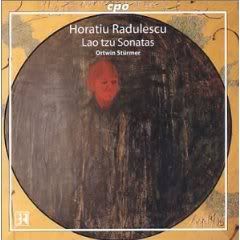
In the past, Babbitt has always been the Big Scary Monster of 20th Century American music (not exactly a catchy nickname), though increasingly his reputation has risen through the good work of people who have actually heard his music.
In the 2nd (1952) and 6th (1993) string quartets (the real highlights of the disc, in my opinion), the ghost of Romanticism is constantly making it's presence felt. Babbitt's sonic palette in these quartets is conservative, alternating between bowed and plucked notes — no col legno, string snapping or rapping the side of the instrument here. The effect is not one of a conscious regression or hearkening to the past, but rather one feels that here Babbitt has absorbed and sublimated an entire history of the string quartet genre (one that has become in the past century even more of a cornerstone than the symphony). There are constant whisperings or "memories" of tonality, happening almost as if by coincidence — like drifting clouds converging to form a familiar shape. More than 40 years separate the two quartets, but little obvious change in style can be discerned. It is almost as if Babbitt is (perhaps heretical to say!) a modern day Fauré, writing music that is solely his own long after it has become unfashionable.
The disc's title piece,
Occasional Variations (1968-71), has suffered the same fate as other pieces of this genre — it sounds extremely dated. Even so, the pure timbres of the ancient synthesizer sound charming to these ears, and give one the feeling of listening directly to the score, free of the "vagaries" of performance — similar to a MIDI transcription of a piece, but more interesting because of the extremely synthetic nature of the sounds.
Where in the two string quartets, Babbitt has sublimated a history of quartet writing, in
Composition for Guitar (1984) it is the folk music of Spain and traditional jazz playing that is on display. Flamenco-like strumming alternates with softly plucked notes in a bed of silence in a way that is meditative without devolving into mere dinner table ambience (if indeed it is at all possible for music this abstract to do so!)
This disc is my introduction to this reputedly "difficult" composer, but it certainly won't be the last. I'd recommend this to anyone interested in music that is challenging, but eminently rewarding.


